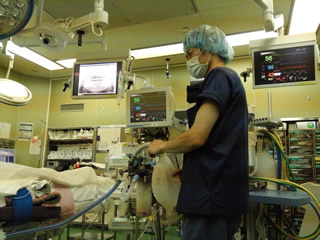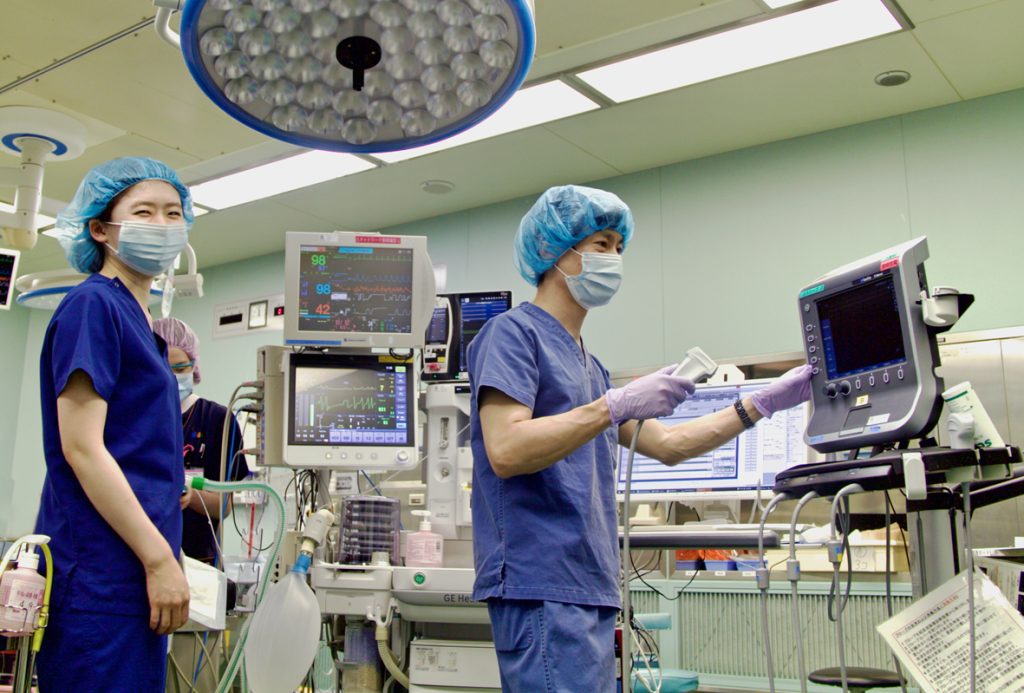General anesthesia is required for invasive oral surgery. We protect patients from surgical stress through general anesthesia management. All patients undergoing general anesthesia receive a preoperative consultation and anesthesia explanation in the outpatient consultation room. We provide a comprehensive evaluation of the patient's general condition and surgical details, and explain them thoroughly.
This treatment is performed for (1) those who have a strong fear or anxiety about dental treatment and are unable to undergo treatment (dental treatment phobia), (2) children and the mentally disabled who are too afraid of dentists to undergo dental treatment, and (3) those who feel nauseous when treatment instruments are placed in the mouth (vomiting reflex). Once general anesthesia is applied, the patient is completely unconscious, so there is no pain or fear during dental treatment. In addition, since multiple teeth can be treated at once while the patient is asleep, fewer treatments are required; each treatment takes 2-8 hours, and the number of treatments is about 1-3 (depending on the patient's condition).
The safety of general anesthesia has improved dramatically over the past 20 years due to advances in anesthetic drugs and medical technology. We provide batch dental treatment with one night and two days or two nights and three days of hospitalization; the cost per hospitalization is approximately 90,000-150,000 yen (when 30% of the cost is covered by insurance).
In oral procedures that are not so invasive as to require general anesthesia, a small amount of sedative medication is administered through an IV to make the patient more comfortable during dental treatment. During treatment, the patient is in a state of intense drowsiness and may not remember what is happening during treatment. This method is also used for patients who have a fear of dental treatment or who feel nauseous when treatment instruments are placed in the mouth. It is also useful for people with cardiovascular diseases, especially hypertension, angina pectoris, and cerebrovascular disease, to prevent their pre-existing diseases from worsening due to stress during dental treatment.
"I've had dental work done, but the pain won't go away, I feel pain in my face, but my dentist can't figure out what's causing it, what the heck department should I go to?"
Are you suffering from this kind of tooth, face, or jaw pain? There are multiple causes of these symptoms, including musculoskeletal, neurological, neurovascular, psychogenic, and intracranial lesions, as well as oral lesions. It is not uncommon for pain to be caused by a combination of factors. In our outpatient clinic, we investigate the cause of pain through a detailed pain-specific interview and various examinations (intraoral and extraoral examinations, imaging tests, blood tests, etc.), and provide physical therapy and drug therapy to alleviate pain in cooperation with other departments.
Some patients say, "I got sick when I received local anesthesia for dental treatment in the past, and I have been unable to receive dental treatment ever since." Most of these symptoms are thought to be a symptom of the vagus nerve reflex or the effect of vasoconstrictors added to the local anesthetic. A small percentage of patients, however, may develop allergic reactions to local anesthetics. If you have strong concerns about the use of local anesthetics during dental treatment, please consult us first.
The practice of general anesthesia and sedation that we offer in our department is not directly related to dental treatment. However, we do play an important role in protecting the patient from stress during dental treatment. The anesthesiologists continuously monitor systemic functions such as breathing, circulation, and metabolism on behalf of the sleeping patient and make any necessary adjustments. Once treatment is completed, the patient wakes up promptly and the body is back to normal. We dental anesthesiologists always strive to make the patient's dental treatment comfortable, without fear or pain.

